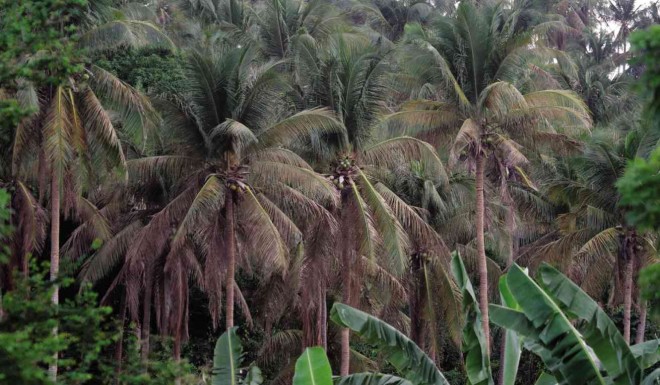LUCENA CITY—Seventy-one coconut farmers from Coco Farmers Movement, or Kilos Magniniyog, are to start today (Sunday) their 71-day protest march from Davao City to Malacañang to press for the use of billions of pesos in coconut levy funds to help coconut farmers rise from poverty.
Isabelita Escovilla, spokesperson for the group, said the march would take 71 days to symbolize the amount of money forcibly taken from coconut farmers at the height of the Marcos dictatorship and which the government continues to keep today.
She said the protesters would demand that President Aquino issue an executive order allowing the use for the benefit of farmers the accumulated interest of the coco levy fund, estimated to be P20 billion.
Escovilla said the 71 marchers were representatives of 10 farmers’ organizations from different coconut-producing provinces across the country. They would march on the entire 1,772-kilometer Davao-Manila stretch at an average of 30 km a day.
“There will be rest days but it will be a tough walk rain or shine,” she said.
The protesters are now in Davao to prepare for the start of the historic march today, coinciding with the commemoration of the declaration of martial law on Sept. 21, 1972, that preceded the repressive rule of the dead dictator Ferdinand Marcos.
Escovilla said they expected the number of marchers to swell as other farmers from coconut-producing areas in the Visayas and Luzon join the march.
Early this month, at least 100 coconut farmers from the Bondoc Peninsula district in Quezon province staged a protest camp in front of the Philippine Coconut Authority (PCA) office in Manila to protest the continued indifference of the government to their appeal to release the coconut levy fund to help rehabilitate the dying coconut industry.
Maribel Luzara, head of Kilusang Magbubukid ng Bondoc Peninsula, said the PCA officials failed to give a categorical answer to their demand.
She said the lives of coconut farmers in Quezon remained miserable due to the destruction caused by Typhoon “Glenda” and the “cocolisap” pest infestation.
